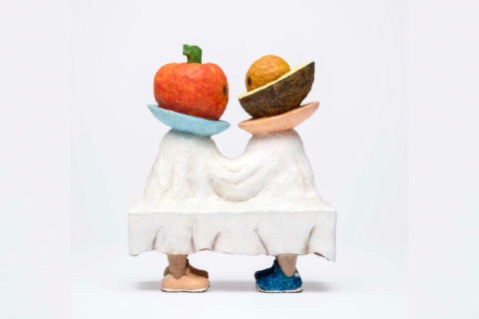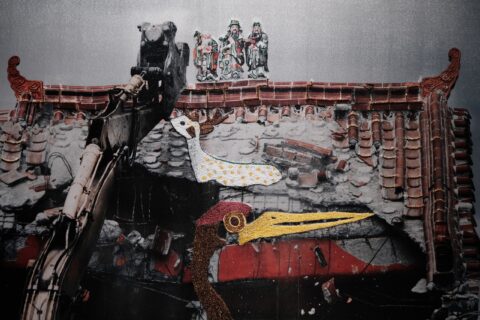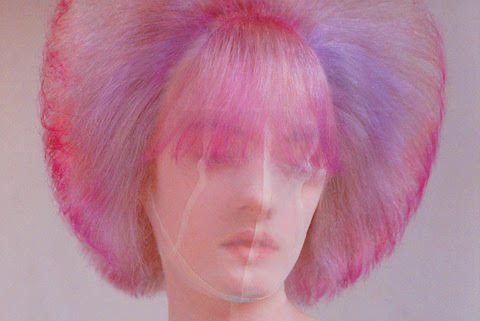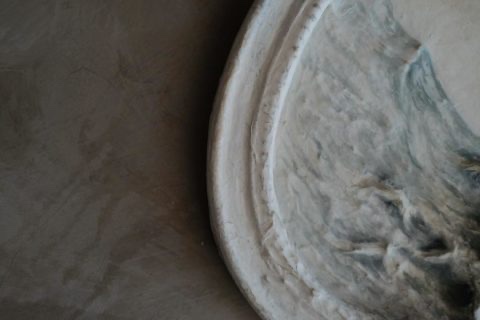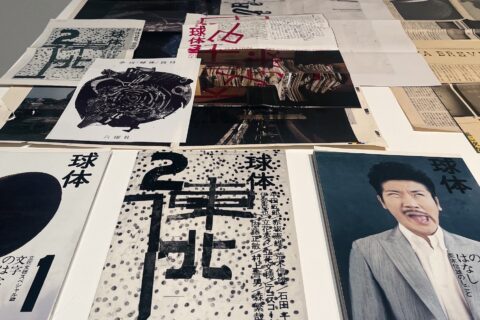在社交網絡盛行的年代,大概對「ootd」和「outfitlayout」等標籤不感到陌生,想起Instagram還未開發時,對每天記錄衣著造型的認知來自黎堅惠小姐,她說衣櫥日記是「一本照片式的日記簿,記下了當時的心情、狀態,甚至記得發生過的事」。
衣著代表心情、場合、身份,是表現自我的方式,也是與外界溝通的媒介。法國攝影師Charles Fréger也深受人的衣著與其背後的意義所吸引,尤其是制服和擁有悠久歷史的民族服裝。最近Giorgio Armani與Charles Fréger合作,於Armani/Silos舉行名為「寓言」的展覽,展出超過250多張由Charles拍攝的作品,是他迄今為止最大型的攝影展。

灰色混凝土牆的展覽空間與色彩鮮明的相片形成對比,當中展示了芬蘭滑冰隊肖像(Steps)、年輕相樸手圖像(Rikishi)、歐洲軍隊及其制服攝影集(Empire)和大型的民族攝影系列(Wilder Mann和Yokainoshima)。經過悉心安排的展示方式猶如讓人走進一個又一個章節裡,每個章節裡的群體都擁有獨特的個性與風格,但通過服裝表達了一種歸屬感,以及與大自然同在、殊途同歸的理念。
當中最令人印象深刻的系列是由2001年拍攝至今、集結超過18多個歐洲國家的 “Wilder Mann” 系列,記錄了擁有悠久歷史的民族進行傳統儀式時所穿的服飾。有些更是延續了好幾個世紀的古老部落的祭典儀式,如慶祝季節更替、風調雨順和祈求豐收;他們穿著熊、山羊和稻草人等誇張怪異的「野人」服飾在雪地和荒山野嶺的襯托下,充滿戲劇性的神話色彩。Charles運用鮮明直接的肖像風格,如令人置身拍攝對象之境,窺看面具和服裝背後,人類如何應對內心恐懼、對歸屬感的需求和與世界溝通的方式。對Giorgio Armani來說,Charles的照片不但是一種記錄,也是對人類能量的描繪,提醒他繼續探究服裝背後最原始,同時又是最深層的意義。

In the age of rampant social media use, one must be no stranger to hashtags like #ootd and #outfitlayout. Back in the days when Instagram was not even distantly a term, my whole concept of wardrobe diary entirely came from Winifred Lai. She once said such wardrobe log is a “photo diary to record her everyday mood, state, and even life events”.
With what you wear, you can express your moods and identity as a way of self-expression on different occasions. Fashion is thus a medium for communication. The French photographer Charles Fréger is keenly drawn to how people dress themselves and its underlying implications, especially in uniforms and tribal clothing with a long history. Recently, Fréger has collaborated with Giorgio Armani to host an exhibition titled Fabula at the Armani/Silos Cultural Centre, to showcase over 250 portraitures by Fréger in his retrospective of the largest-scale by far.
In a setting of grey concrete walls starkly contrasting the bold vivid colors of the images, Charles Fréger’s worldwide portraitures include a Finnish skating team (Steps), a group of young sumo wrestlers (Rikishi), a collection of European armies and their uniforms (Empire), and sizeable series of tribes documentation (Wilder Mann and Yokainoshia). Through the specially arranged presentation, viewers are invited to embark on a journey of episodes, each features a community of unique characters and style. Costume is the tool for one to express a sense of belonging and hence co-exist with the landscapes.
Among all the images, the most captivating series has to be Wilder Mann, which is an ongoing project started from 2001 and spanned across 18 European countries to document mythical costumes worn by old tribes during traditional rituals. Some include tribal ceremonies that hark back to harvests and solstices or celebration of season change. They dress as bears, goats, strawman, or “Wild Man” to be pictured in rugged landscapes such as barren mountains and snow gullies. The image composition is equally dramatic and mythical. Fréger’s sharp and sculptural portrait style has prompted viewers to look beyond the costumes and masks to understand how human face inner fear and how we yearn for a sense of belonging, to communicate. To Giorgio Armani, Fréger’s images are never mere documentation but a depiction of humanity’s power. Fréger’s photography constantly reminds Armani himself of delving into the most fundamental motive of fashion.

